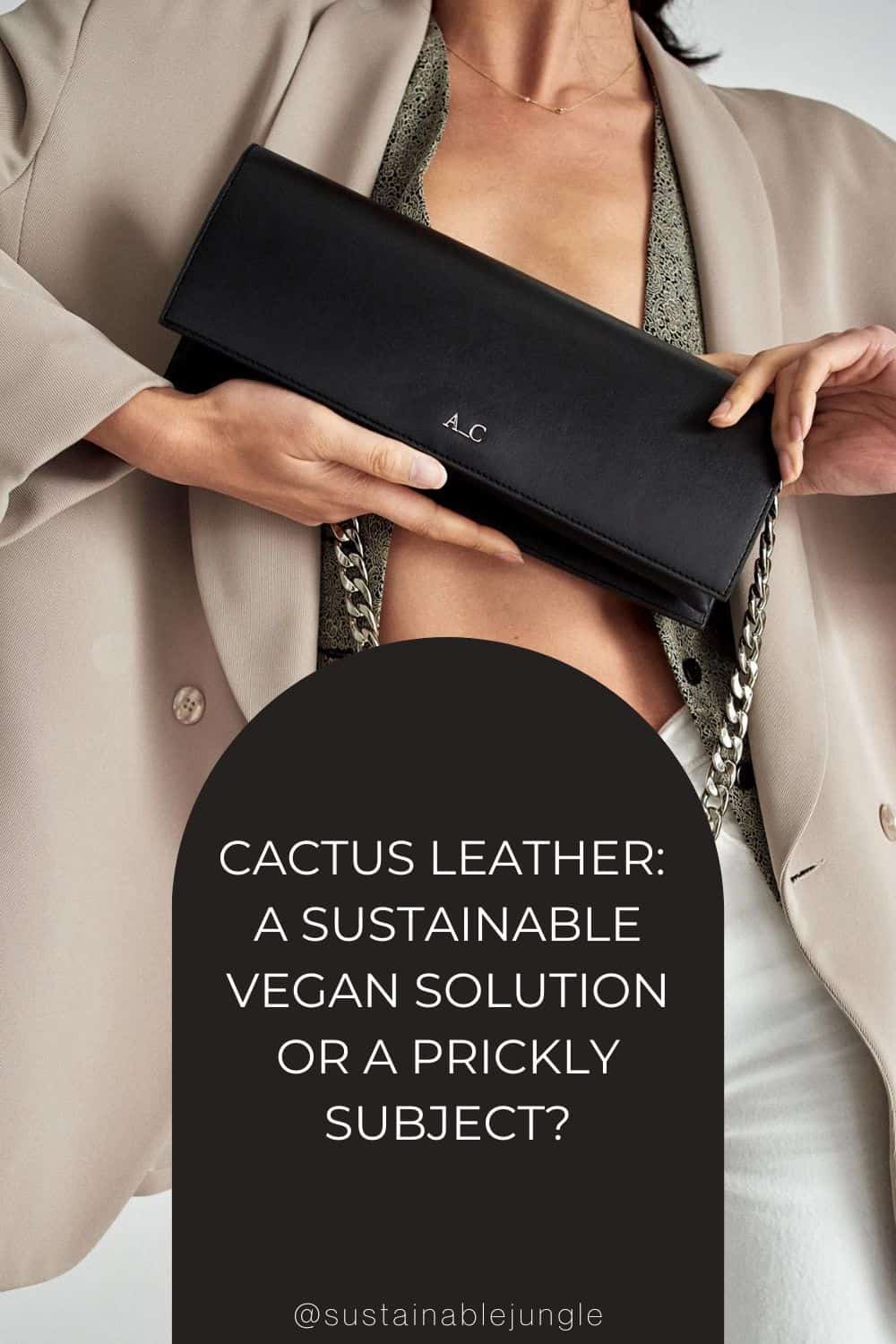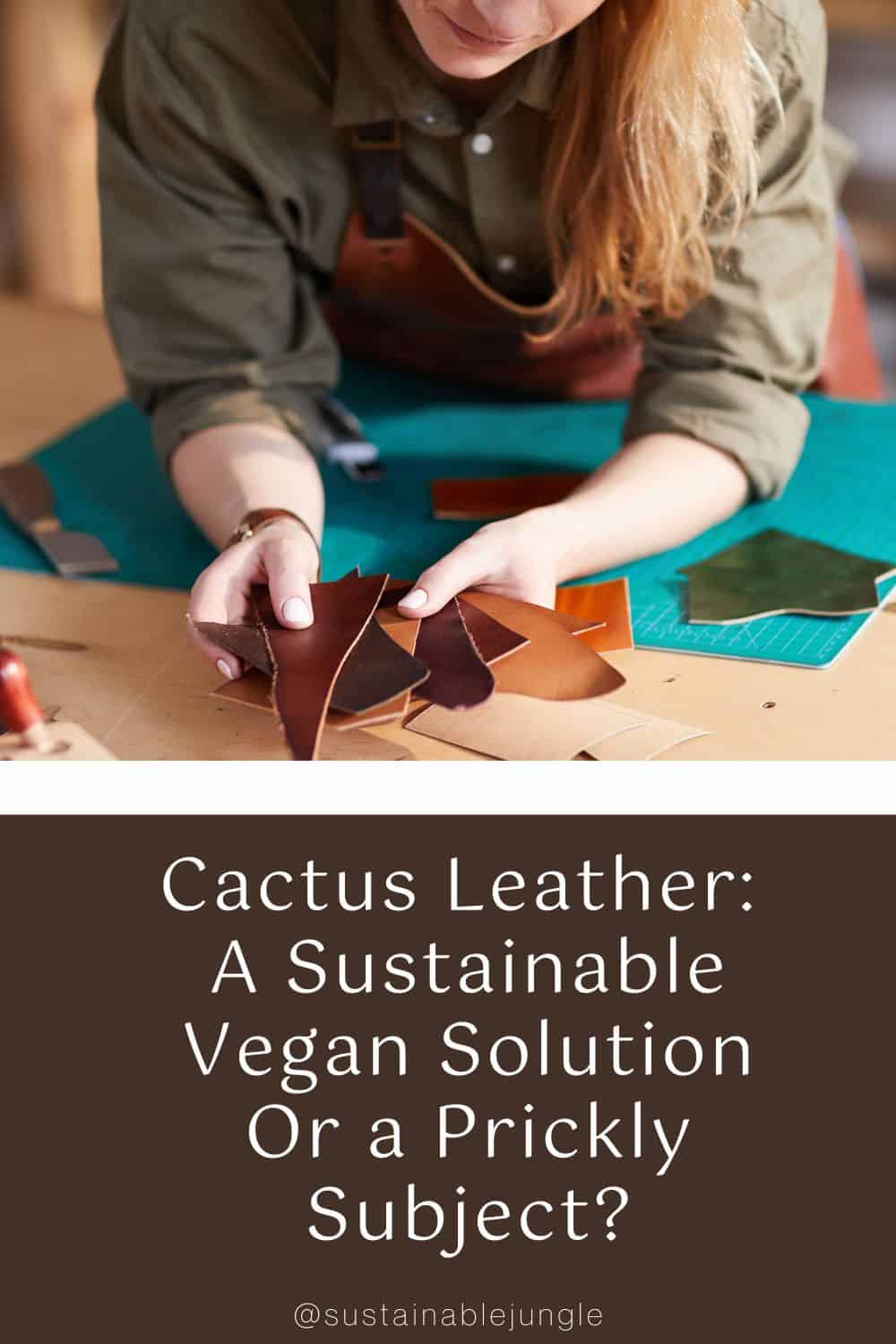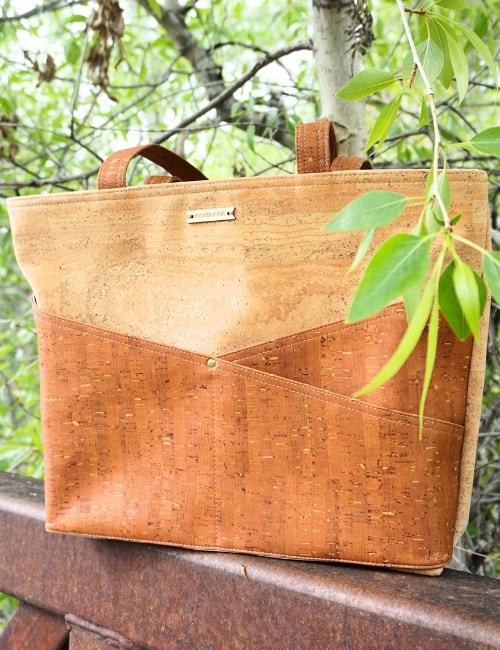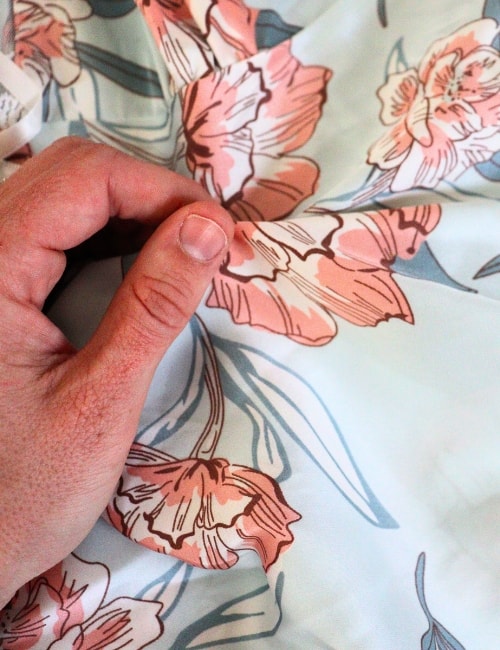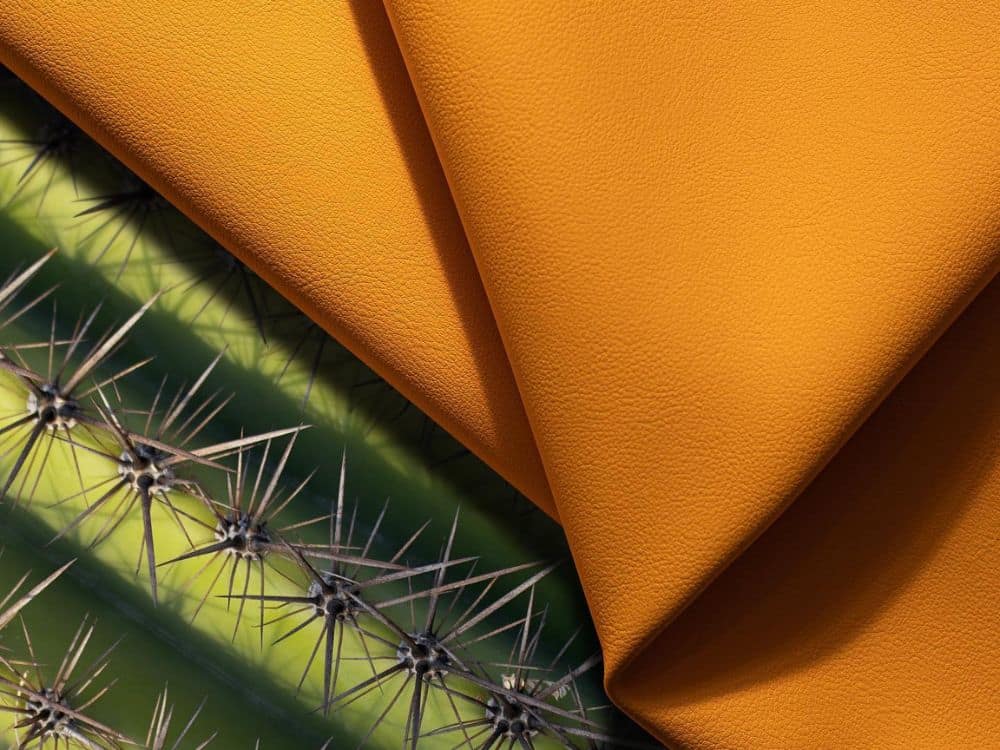
Cactus Leather: A Sustainable Vegan Solution Or a Prickly Subject?
Leather made from cactus?
No joke (er, poke)!
The only houseplant you managed to keep alive in your apartment garden all year is also versatile enough to be a vegan leather.
As with Piñatex leather, cactus leather is celebrated for its breathability and supposed sustainability, meaning it’s making its way into upholstery, shoes, handbags, and apparel.
Mercedes Benz uses it for some of their E-car interiors, and fast fashion giant H&M offers cactus leather in their kids’ clothing line.
But just what is cactus leather material and is making leather from cactus something worth celebrating from a sustainability perspective?
It’s a prickly subject, but we won’t desert you. Instead, we’ll guide you through how to make cactus leather, how it compares to other materials, and what the future of its industry might have in store.
1. What Is Cactus Leather?
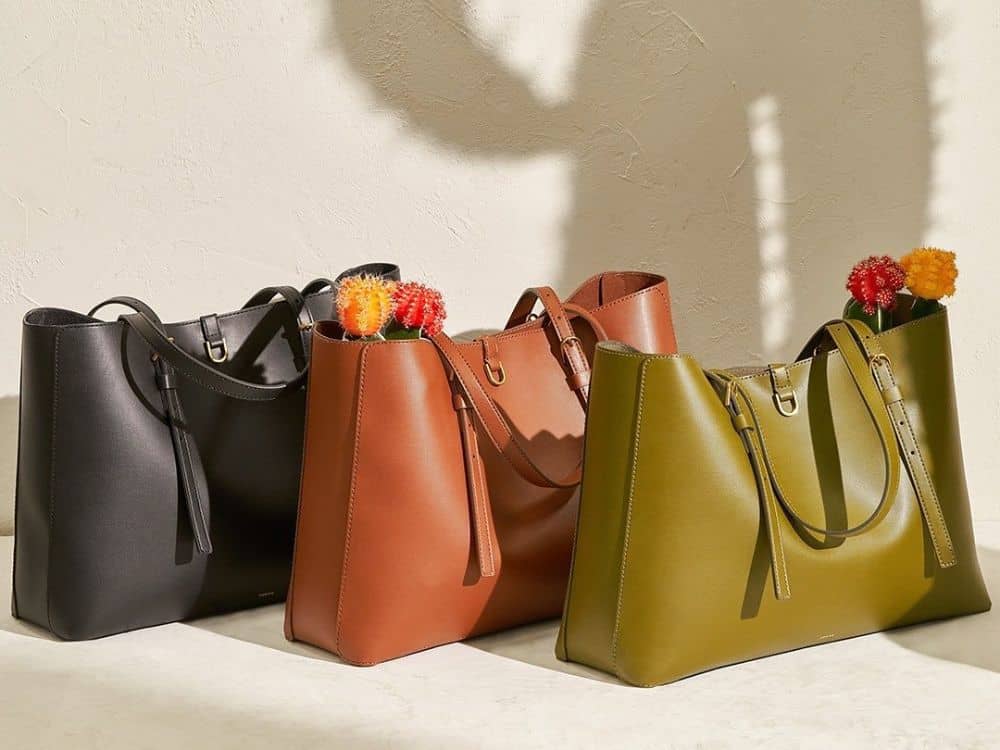
That new vegan handbag might pair perfectly with your latest thrifted outfit, but what is a cactus leather purse exactly? What’s it made out of?
To risk stating the obvious, it’s leather made out of cactus—specifically the Nopal (Opuntia Ficus Indica) or prickly pear cactus.
It grows with minimal water in abundance around the world, particularly in Mexico and Australia, where it grows in such excess that it’s considered an invasive species.
Both the paddles (AKA leaves) and the fruit of the Nopal cactus are mainstays in the Mexican diet, where it’s primarily harvested for leather.
That means this recently invented material is a byproduct of the food industry, so you can think of making vegan leather from cactus as a sort of cactus recycling.
2. How Is Cactus Leather Made?
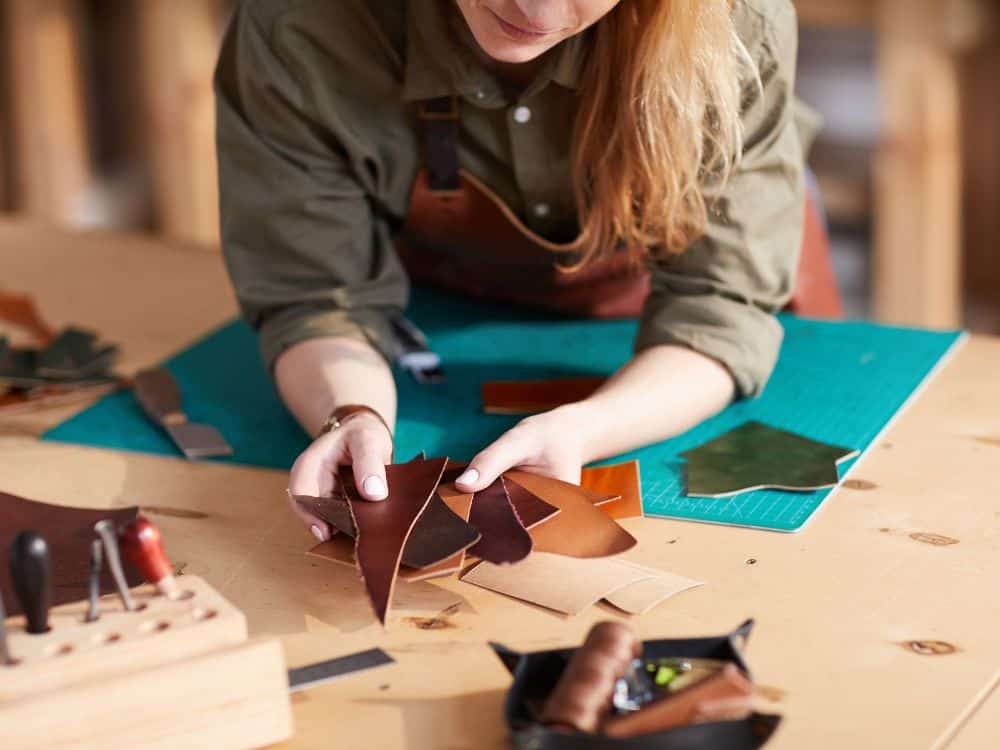
Nopal cacti have two harvests annually, which is when the large, mature cactus paddles are cut.
This is accomplished without destroying the plant, making Nopal cacti sustainable plants that are harvestable long-term.
The cactus paddles are washed and crushed into tiny pieces, which are laid in the sun to dry over several days.
Fibers are then separated from the dried up mulch after sun-drying.
Next, a powdered protein is extracted, which is brought to a laboratory and mixed with different non-toxic formulas and natural, sustainable dyes to create a bio-resin solution.
This resin is then poured onto a “carrier material”, such as organic cotton, recycled cotton, recycled polyester, or a blend. Bonded together, these become leather-like materials.
Given that some of these carriers are more sustainable fabrics than others, it’s important to check what a brand’s Nopal leather is made with. For example, organic cotton will be far more sustainable than any carrier made of synthetic fabrics.
3. Who Makes Cactus Leather?
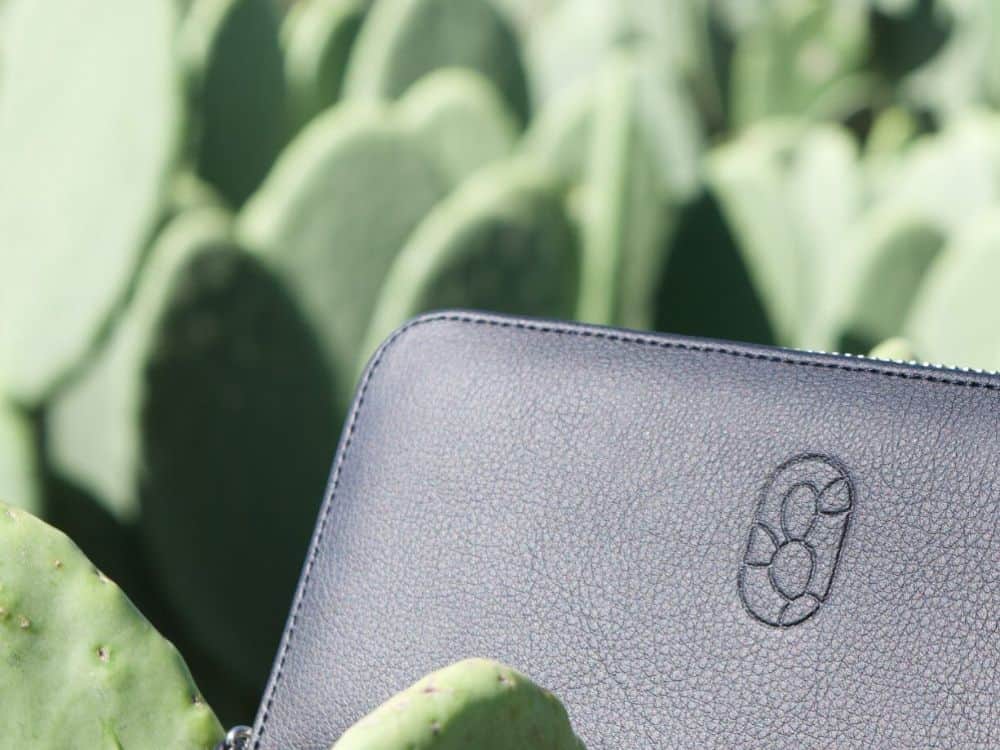
It was the plastic pollution crisis that first catapulted Desserto founders into the desert to explore sustainable materials from Mexico’s ever-abundant cacti.
As of now, Desserto is the only cactus leather manufacturer worldwide.
After two years of intense research and development to maximize product quality, the inventors debuted the innovative material at Milan’s leather fair Lineapelle in 2019.
They sought to rival conventional leather, and poked their way to the top of the sustainable fashion industry with a plant-based and breathable animal leather alternative.
Since then, Desserto has won countless awards and accolades, been featured in the world’s most iconic luxury magazines, and partnered with big brands like Adidas and Givenchy.
The number of sustainability certifications held by the company are impressive, and include OEKO-TEX, Global Recycled Standard (GRS), USDA Organic, USDA Biobased, ISO 9001, and PETA-approved vegan.
Says the Desserto website, transparency, innovation, and sustainability are the three pillars upon which the brand is founded.
Does that mean cactus skin leather is sustainable, truly? Or so we need to look out for greenwashing as green as the cactus leaves leather is made from?
4. Is Desserto Cactus Leather Sustainable?
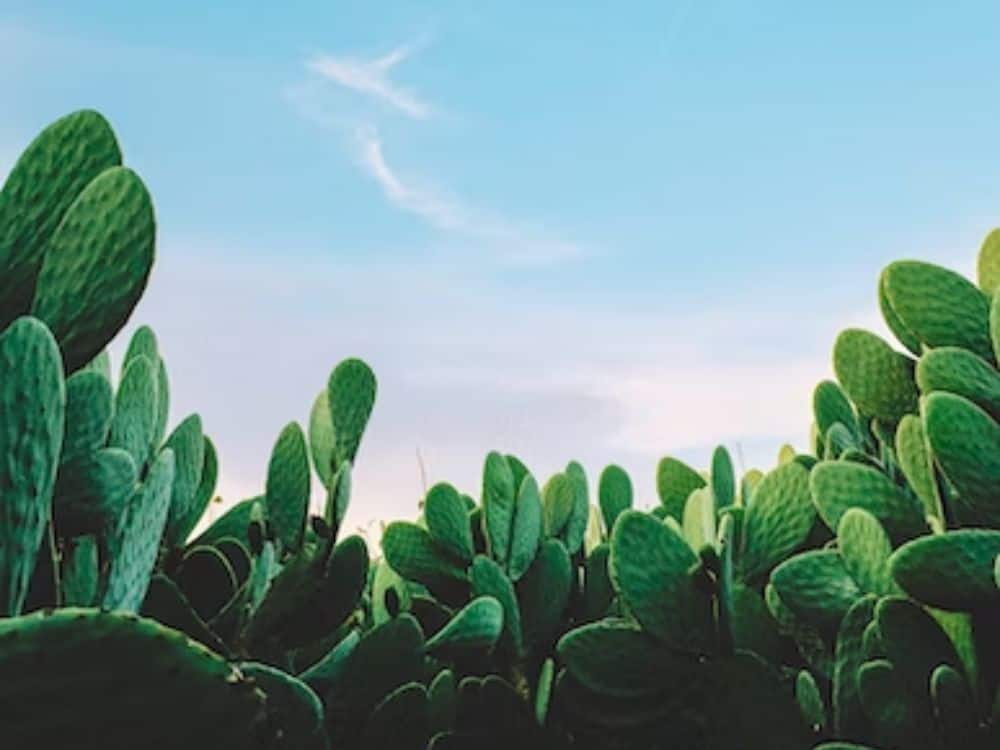
The animal leather industry is as big as a cow—estimated at over $200 billion.
The environmental footprint required to raise animals is at a breaking point on this planet.
It’s said that for every hamburger (or leather wallet), a square hectare of the Amazon is cut down. More than 200 million cattle now graze there.
Then there’s the animal cruelty AND worker cruelty factors, thanks to the leather tanning process, which spews chemicals into waterways and exposes tannery workers to a gamut of carcinogenic chemicals.
Meanwhile, vegan alternatives can have an environmental impact that’s not much better, considering virgin plastic for “pleather” is usually petroleum-based (often PVC, the worst type of plastic).
Aside from being an alternative to animal skins, how is Desserto leather different from its plastic-based kin?
Sustainability of Nopal Cactus Farming
The Nopal cactus is fast-growing and doesn’t require much water (or any pesticides) to thrive. It’s usually grown in arid environments and tolerates drought, which is excellent for water conservation.
It’s also a reliable source of income for local farmers.
On the flipside, the prickly pear cactus is so hardy and adaptable that it’s a problem. In Ethiopia and Australia, it now edges out animal grazing areas.
That said, the cactus scores points for sequestering carbon—this means it can help mitigate excess carbon dioxide on our planet and slow the effects of climate change. The prickly pear cactus removes CO2 from the atmosphere and stores it inside itself.
Carbon sequestration means the cactus soil is carbon-rich and fertile for growing.
Like hemp and bamboo, it inherently promotes regenerative agriculture.
Sustainability of Desserto Cactus Leather Processing
Desserto’s growing process is certified organic, and they only use rainwater for their plants.
Because the sun’s power is harnessed in the drying process rather than heat-based or mechanical means, it’s considered eco-friendly and energy-efficient.
Sustainability Of Cactus Leather Backing & Coating
What makes Nopal leather better than most similar vegan fabrics is that it is not only waterproof, but also breathable.
However, this comes at a cost.
While Desserto’s leather (in its best form) is made of about 92% organic carbon content, polyurethane is used as a coating to add waterproofing and general durability.
Fortunately, Desserto uses a newer form of biodegradable polyurethane (PU) combined with organic dyes. According to the brand, any byproduct is organic and goes toward animal feed.
Then there’s the backing, which can range from synthetics to natural fibers. Recycled polyester or recycled cotton are common, but only the latter would make that vegan cactus leather wallet as natural as it purports to be.
Is cactus leather biodegradable?
Here’s where things get prickly: we’re not actually sure.
We’re told it is organic and PVC and toxin-free, but that it is only partially biodegradable.
While Desserto mandates transparency, the public isn’t told what makes it not fully biodegrade or how long it would take to break down. No one knows exactly what is in the patented secret formula.
It must mean some inorganic substance is used, and we can’t be sure it doesn’t contain some other bio-plastic.
Until either more innovation or more transparency, consider it neither biodegradable or compostable.
5. Is Cactus Leather Better Than Leather?
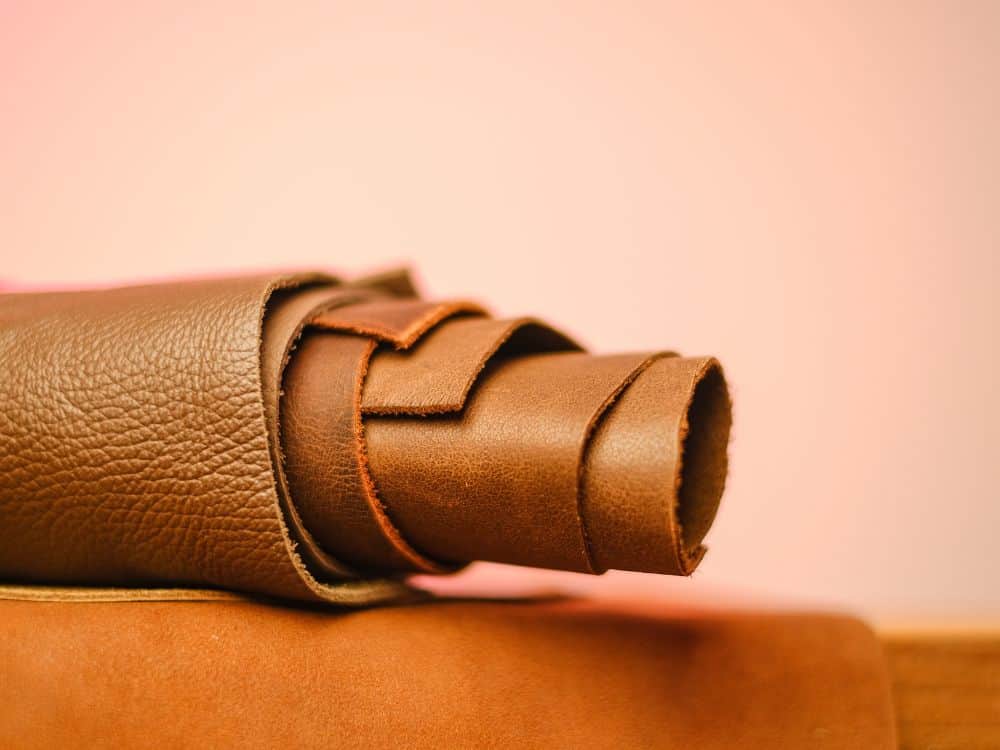
It’s not new news that the leather industry is fraught with injustice.
From the mistreatment of animals (who must be killed) to the methane gas released from raising said animals—which is 25x times as potent CO2 and alone accounts for 20% of global emissions—to the toxic chemicals like chromium and arsenic used in tanneries, leather is highly problematic.
Cactus leaf leather is not chemical intensive, is vegan and cruelty-free, is plant-based, reduces atmospheric carbon, rather than adding to it.
In terms of biodegradability, they’re comparable. While leather is technically natural, it takes so long to break down that it might as well not be. Plus, the tanning chemicals used will pollute anything that is degrades into.
One of the main arguments in favor of animal leather is that despite its shortcomings, it has one of the longest lifespans of all textiles.
How durable is cactus leather?
Generally rated to last about 10 years—provided you take care of those cactus leather boots—studies have shown cactus leather products can last as long as standard leather.
6. Is Cactus Leather Better Than Cotton?
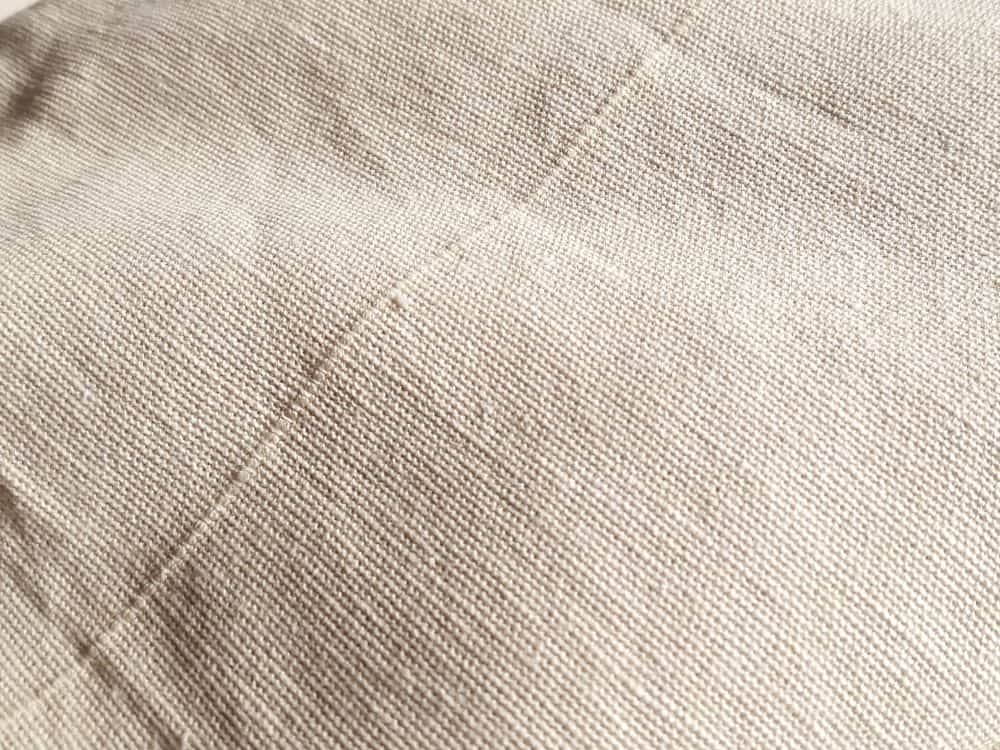
Nopal leather and cotton share in common that both are crops grown. The similarities, though, end there.
Cotton is the world’s “dirtiest crop” for its enormous pesticide and insecticide requirements, and it requires nearly 200 times the amount of water for a kilogram of cotton than cacti.
Even for organic cotton farming methods that only use rainwater, the cactuses’ minimal water requirements make it a far more environmentally-friendly crop.
Organic cotton, while it does away with all the pest chemicals, requires a remarkable amount of water. Up to 20,000 liters of water are required for 1kg of organic cotton, whereas 1kg of cactus requires 200 litres of water.
While the growing and cultivating of cactus has obvious advantages to cotton, it falls short with its end of life. Cotton, organic or otherwise, is fully biodegradable, whereas Nopal leather is only partially biodegradable.
This is because cotton is purely plant-based, not requiring a coating or a carrier fabric.
That said, they both serve very different purposes in the world of sustainable and ethical fashion.
Cotton isn’t durable enough to make hard-wearing shoes, and cactus leaves probably couldn’t substitute for your favorite organic cotton leggings.
7. What Brands Use Cactus Leather?

Designers and cactus leather brands are drawn to the innovative material because it’s (relatively) eco-friendly while still being durable and easy to clean (just some mild soap and water).
Sustainable clothing brands creating everything from footwear to bags made from cactus include:
- A_C Official: As one of our favorite brands for sustainable bags, you’ll find various styles of cactus leather handbags.
- Amour Vert: They currently offer a vegan cactus leather jacket.
- Bohema
- Carmona Collection: Not only do they offer vegan cactus leather shoes, but they’re made in Mexico, where Desserto leather is also produced.
- CLAE Shoes
- Everlane
- Frida Rome
- LUXTRA
- SENTIENT
- Thalie
- VEDA
The main impediment to popularizing the material is its price point. Hopefully, more cost-effective ways to create organic or recycled carrier materials will eventually bring down its cost.
Did you know we Have a Newsletter?
We cover the latest in sustainable living, fashion, zero waste, beauty, travel, finance and more…
Final Thoughts On Vegan Cactus Leather
For those who admire the classic, sophisticated vibe of leather, it can be tricky: either choose “pleather” that pollutes the planet, or wear the carcass of a dead animal—which is not only animal cruelty but also pollutes the planet.
Cactus leather, like fish leather, may not be perfect—yet, because as they say, cactus makes perfect!—but it is a more sustainable fashion solution with a lower carbon footprint than other similar fabrics.
It’s also less water intensive, free of toxic chemicals like PVC and phthalates, adaptable, quickly harvested, bio-based, and carbon sequestering.
The main challenge it need(le)s to overcome is to continue innovating its coating and carrier materials until the finished product can be considered 100% biodegradable.
Then we can all look as chic and cool as leather looks until the cows come home—except without the cows.
If you know someone struggling to find an ethical leather, we’d be prickled pink if you shared this article with them.
Pin these:
